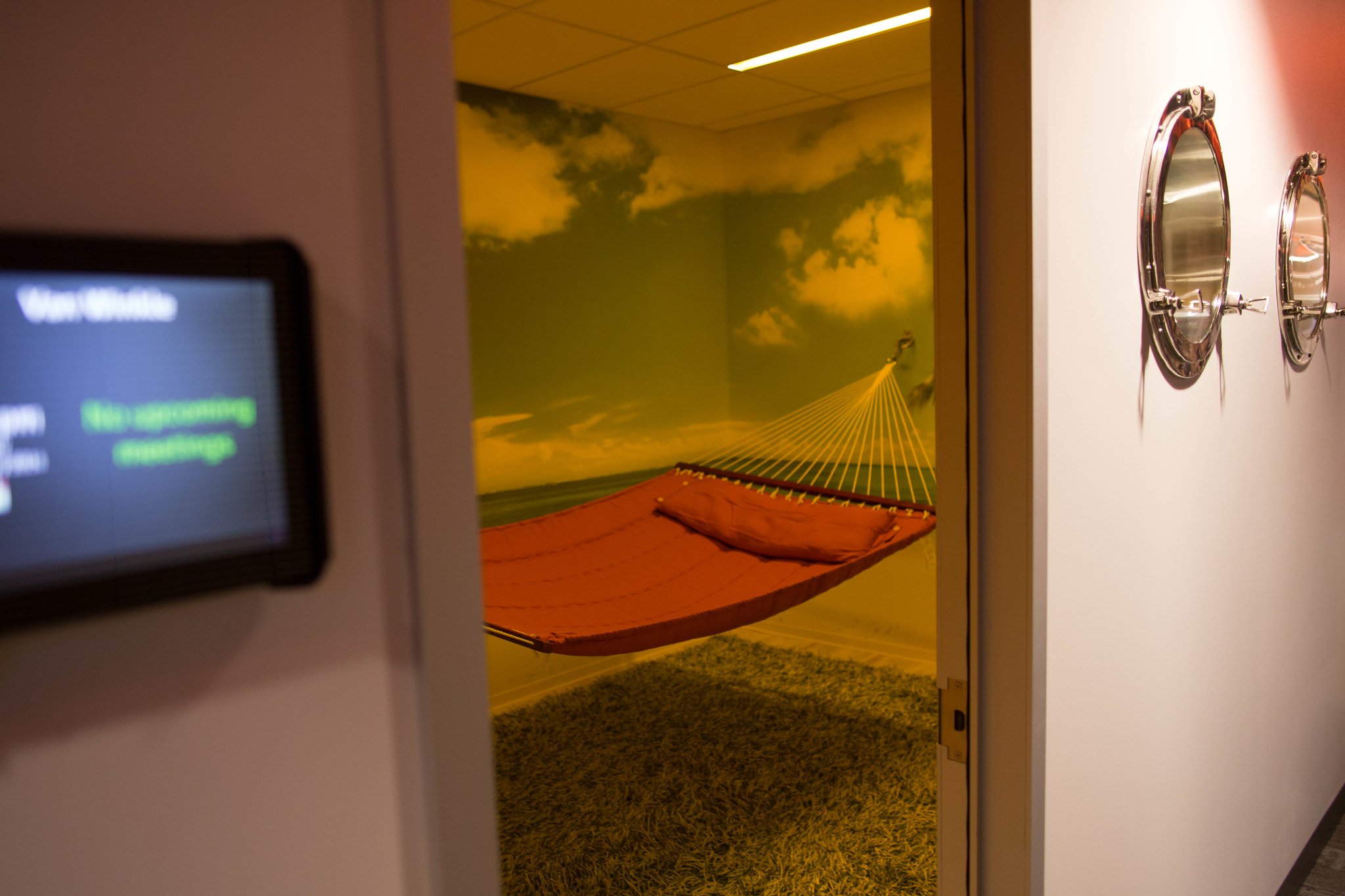It wasn’t so long ago that employees were thrilled if their tin of instant coffee in the tearoom was replaced by an espresso machine. Likewise, workplace wellness was ticked off by offering employees a 20% discount at the gym across the street and providing a fruit bowl in the office. If you were really lucky, you might have worked at a company that allowed you to have an extra day of annual leave on your birthday.
In many workplaces, incentives such as these are still valued by staff. However, large companies are now upping the ante and offering their workers generous perks in an attempt to attract and retain the best talent. In turn, today’s jobseekers are choosing their next role based on much more than who is offering the highest salary.
In a 2018 Glassdoor survey, roughly two-thirds (63%) of people said benefits are among their top considerations before accepting a job. Additionally, a 2015 Glassdoor study found nearly four in five (79%) employees preferred new or additional perks to a pay rise.
Many companies have already embraced this trend and are offering catered gourmet breakfasts and lunches, pet-friendly offices, kitchens stocked with an endless supply of snacks, and free onsite gyms and fitness classes.
While perks like these definitely appeal to many people, large companies are going one step further by providing their employees with some seriously amazing incentives. Here are some of the most impressive employee benefits being offered:
A matter of time
A recently released MetLife study, which surveyed 2,600 full-time workers in the US, found the most desired benefit is unlimited annual leave. According to the survey, 72% of respondents would prefer unlimited paid time off over any other benefit.
A growing number of big companies, including Netflix, HubSpot, Groupon, General Electric and Dropbox, are now offering unlimited vacation time.
HubSpot CEO Brian Halligan was inspired to introduce its vacation policy in 2010 after watching Mad Men and realising how much corporate culture has changed in the past 50 years.
“Our new vacation policy is that there is no vacation policy – no paid time off forms, no vacation rollover, nothing,” he wrote in a blog post.
“If people want to take time off, they can take time off.” – HubSpot CEO Brian Halligan
Meanwhile, Netflix VP of Edge Engineering Daniel Jacobson pointed out in a 2013 blog post that Netflix “does not have an ‘unlimited vacation’ policy, we have a trust policy.”
Essentially, as long as Netflix employees are getting their work done and communicating with their team, they can manage their own time and leave.
“Time away works differently at Netflix. We don’t have a prescribed 9-to-5 workday, so we don’t have prescribed time off policies for salaried employees either,” the company’s website states.
“We don’t set a holiday and vacation schedule, so you can observe what’s important to you – including when your mind and body need a break. We believe in working smarter, not harder.”

A fare go
If there’s one employee benefit that’s on par with unlimited annual leave, it would have to be a paid holiday.
In 2012, CEO and Founder of Denver-based tech company FullContact introduced a new policy known as a “paid paid vacation”. Under the scheme, employees are given a whopping US$7,500 per year to pay for a holiday.
CEO and Founder Bart Lorang described it as a “totally insane” idea, explaining the company provides employees with 15 days paid vacation leave, plus public holidays, as well as gifting each employee US$7,500.
“We felt that everyone should have the opportunity to take a nice vacation without constantly worrying about how much money they’re spending while on vacation,” he wrote on the company’s website.
“Everyone should have the opportunity to take a nice vacation without constantly worrying about how much money they’re spending.” – FullContact CEO and Founder Bart Lorang
“There are a few rules: you have to go on vacation, or you don’t get the money; you must disconnect; and you can’t work while on vacation.”
Meanwhile, Airbnb offers a US$500 quarterly travel credit that employees can use to book accommodation on Airbnb.
“This gives all employees a chance to regularly use the product and get closer to our host community,” Airbnb Public Affairs Manager Brittany Cornejo says.
Canadian tour company G Adventures encourages its full-time employees to sample its small group tours around the world.
From cruising around the Galapagos Islands to trekking in the Himalayas, staff can choose from a huge range of destinations. They can book one tour every 10 months, with G Adventures covering up to C$3,000 of tour expenses, plus up to C$750 towards flights.
Similarly, AFAR Media offers its employees a travel stipend of US$2,000 – the only catch is they must go somewhere they’ve never been before. When they return, they have to upload a highlight reel of their trip to the company’s intranet.

Bringing up baby
An increasing number of large companies are making life easier for new parents by offering extended paid parental leave as an employee benefit.
Netflix is leading the way by allowing parents of any gender to take up to 12 months off at full pay following the birth or adoption of their child.
“Experience shows people perform better at work when they’re not worrying about home,” former Netflix Chief Talent Officer Tawni Cranz wrote on the company’s blog when the new policy was announced in 2015.
“Experience shows people perform better at work when they’re not worrying about home.” – former Netflix Chief Talent Officer Tawni Cranz
“This new policy, combined with our unlimited time off, allows employees to be supported during the changes in their lives and return to work more focused and dedicated.”
Spotify also has a generous parental leave program, offering six months fully paid leave to all employees, regardless of gender and how they became a parent.
Parents are encouraged to use the full six months, which can be split into separate periods and taken any time up to their child’s third birthday.
Spotify Global Head of Diversity & Inclusion Isa Notermans took advantage of the policy after becoming a mum in 2016 and wrote about the experience on Spotify’s HR Blog.
“I am so thankful for this license to focus my entire sleep-deprived, overjoyed self on our amazing little new family member,” she posted three months after giving birth.
“Right now, I can’t even imagine having to split my focus and energy between the baby and my job.”
Facebook offers new mums and dads four months of paid leave, plus a $US4,000 “baby cash” bonus. It also provides subsidised childcare and financial assistance for egg-freezing, surrogacy and adoption fees.
“At Facebook, we offer four months of maternity and paternity leave because studies show that when working parents take time to be with their newborns, it’s good for the entire family,” Facebook CEO Mark Zuckerberg wrote in a post on the social networking site in 2017, before the birth of his second child.

Striking a balance
According to a 2015 global EY study, one-third of full-time workers report that managing their work–life balance has become more difficult.
Meanwhile, the 2016 Deloitte Millennial Survey found having a good work–life balance was more important to millennials than career progression.
By 2025, it’s estimated that 75% of the global workforce will be comprised of millennials, which means policies that foster work–life balance are going to become even more important as a means of attracting and retaining talent.
It probably won’t suit every company to start dishing out unlimited annual leave as an employee benefit, but some are offering extra days off to help keep staff refreshed, inspired and motivated.
In the interests of meeting dual goals of conservation and work–life balance, the World Wildlife Fund closes its Washington office every second Friday.
The not-for-profit organisation aims to reduce its carbon footprint by reducing electricity use when the office is shut, as well as taking more cars off the road by eliminating one day of commuting for its staff.
Some employees work from home on “Panda Fridays”, but others work extra hours on other days so they can take the day off.
Outdoor outfitter REI encourages its employees to get outside and play by offering two bonus days of paid leave a year called “Yay Days”.
According to the REI website, the only catch is they need to use the time off to “try something new, challenge themselves in a favourite activity, or work on an outdoor stewardship project.”
Meanwhile, Hubspot and Adobe Systems reward long-serving employees by granting them a one-month paid sabbatical once they’ve been at the company for five years.
HubSpotters get the added bonus of US$5,000 to spend towards travel, programs or projects that they wish to undertake during their break.
“The time is meant for HubSpotters to step away from work for an extended period to really enjoy uninterrupted time with family and friends doing what they love outside of work,” the HubSpot website states.

Fit for duty
Healthy employees are more productive, which is why most large companies offer some form of corporate wellness program as part of their employee benefits.
In a 2017 study, researchers at the University of California, Riverside, UCLA and Washington University found participation in a basic wellness program increased worker productivity by at least 5% – equivalent to a day’s worth of work a month – and in some cases by as much as 11%.
“Our research suggests that corporate wellness plans can boost employee satisfaction by offering a tangible benefit that empowers them to take care of their health in a way that’s integrated into their busy lives,” Assistant Professor of Management in the School of Business at UCR Timothy Gubler says.
“The result is healthier and happier employees who are not only less expensive and less absent, but also more productive.”
“The result is healthier and happier employees who are not only less expensive and less absent, but also more productive.” – Assistant Professor of Management in the School of Business at UCR Timothy Gubler
Health and wellbeing is a big priority for LinkedIn, which gives employees at its Australian office A$1,800 a year to spend on wellness.
This can be used to cover things like personal training sessions, gym memberships and massages, but can also be put towards the cost of childcare or hiring a domestic cleaner – essentially anything that makes employees’ lives easier.
Recognising that well-rested workers are healthier and more productive, US health insurance company Aetna has introduced an incentive to encourage its employees to get more sleep at night.
Staff who sign up for the program are given Fitbit fitness trackers to monitor their sleep patterns, and those who sleep for seven hours or more each night for 20 nights in a row are rewarded with US$25 per night, up to US$500 a year.
Other large companies are encouraging employees to sleep on the job by installing nap rooms.
“Lots of research shows that a nap of about 20 minutes in the afternoon has a positive effect on attention, vigilance, mood and alertness,” Ohio State University sleep specialist Dr Rita Aouad told The Guardian.
Google offices have high-tech beds featuring built-in sound systems for those who like to listen to relaxation music. Hootsuite’s serene nap room features stretcher-style beds and low lighting, while HubSpot’s beach-themed nap room boasts a hammock, tropical backdrop and porthole windows.

Life after death
It’s no secret that Google employees are entitled to a huge list of perks, but one of the most generous employee benefits comes after they die.
If a Googler passes away while employed by the tech giant, their spouse or partner will receive 50% of their salary every year for the next decade.
Additionally, the employee’s children will each receive US$1,000 per month up until the age of 19 (or 23, if the child is a full-time student).
“One of the things we realised recently was that one of the harshest but most reliable facts of life is that at some point most of us will be confronted with the death of our partners,” Google’s former Chief People Officer Laszlo Bock told Forbes in 2012.
“Obviously there’s no benefit to Google. But it’s important to the company to help our families through this horrific, if inevitable, life event.”
Working at The CEO Magazine
Attracting and retaining top talent is a priority for any business, and at The CEO Magazine, it’s top of the list for us. That’s why we offer our employees additional annual leave and dedicated time to focus on their own development and learning, plus we reward hard work with regular regional and global incentive trips. We grow our own talent and support our people in their careers with us, always looking to fill vacancies internally first. Our Global Sales Director, Head of Sales EMEA, Head of Sales ANZ and Regional Sales Manager Asia have all come through the ranks of The CEO Magazine. We recently asked our people for three words to describe what it’s like to work at The CEO Magazine. The number one descriptor was “fun”!







